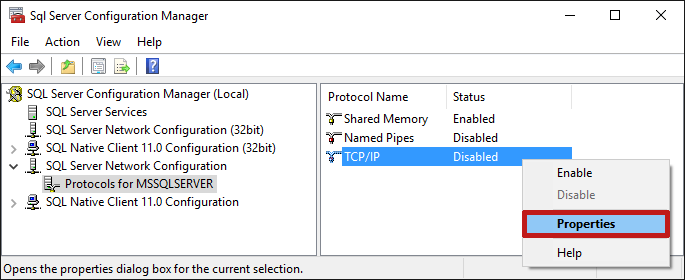Sql server Configuration Manager Features

The SQL Server Configuration Manager is a tool that is available for a variety of purposes. Besides allowing you to configure your database, this tool is also useful for managing your failover clusters. You can use this tool to view the connection parameters of a failover cluster. However, when you need to perform any action, you should use the Cluster Administrator instead. There are some other features that are not included in this tool.
The SQL Server Configuration Manager has a number of features that make it very useful for setting up your database. For example, you can start, stop, pause, and resume the services that are running on your server. It also gives you control over SQL server services, including the SQL Server Analysis Service, SQL Server Full Text Search Service, and SQLServer Database Engine Services. The tool also gives you the option to configure your network settings and specify the identity of the administrators of the SQL Server.
The Sql Server Configuration Manager tool is installed on your PC. It enables various SQL services and protocols. It is also a great help in configuring your databases. The tool is available in the All Programs menu of your computer. Right-click the application and choose “SQL Server Configuration Manager” from the list. The program will open when you click File, select a folder, and press Save.
The Sql Server Configuration Manager also allows you to stop, start, and pause SQL server services. This tool also allows you to enable and disable SQL servers services, including the Analysis Services and Full Text Search Service. It also helps you to configure the network connections between the various servers. Moreover, you can configure the settings of the database to be used for managing management points. You can run the tool as often as you need to with your SQL configuration.
The SQL Server Configuration Manager is a tool for managing the SQL services. This tool enables you to start, stop, and pause SQL services. It also enables you to set up security settings for the server. Using SQL Server Configuration Manager, you can also manage the database. You can configure its security settings, and configure the database for your business. The SQL Server Configuration Manager also provides you with access to databases and servers.
This tool allows you to configure the different services of SQL Server. It enables you to start, stop, and pause SQL services. In addition to that, it also allows you to configure various SQL tools. The tools in SQL Server Configuration Manager can also be used for configuration tasks. One of these tools is SQL Server Browser. It is a tool that lets you customize the interface of a website or an application.
In addition to enabling and stopping SQL services, this tool also allows you to configure the various protocols. It is a great tool for monitoring the security of your database. Using it will ensure that your data is safe and secure. It is also easy to customize the SQL Server’s settings for the users. This tool provides a GUI and a command line interface. It is available only for SQL Server 2005.
The other tool is SQL Server Configuration Manager. It is a tool that allows you to configure the various services of the SQL server. By default, the software does not enable the SQL Server Browser. It only provides the functionality to configure the SQL services. It is a convenient tool that enables you to manage the SQL servers. If you’re a Windows user, it allows you to change the properties of the database.
The SQL Server Configuration Manager also enables and disables services. It can stop and start services, pausable, and resumed. Other features of SQL Server include the SQL Server Agent Service, the Full Text Search Service, and the Analysis Services. By enabling these options, you can manage the different features of the SQL server. This tool is also useful when it comes to monitoring the performance of your database. There are many ways to manage the server, so make sure to use the features that are important to you.




